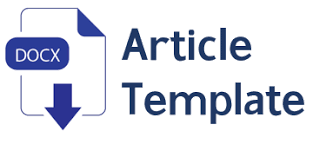TAPS Ban and Media Literacy to Protect Youth from Tobacco Industry Inducement
Downloads
Background: The Indonesia Health Survey 2023 indicates that around 70 million people in the country smoke, with 7.2% aged 10 to 18, and Central Java province reports one of the highest child prevalence rates in Indonesia at 9.6%. Tobacco Advertising, Promotion, and Sponsorship (TAPS) influence intention to smoke, and on the other hand, Smoking Media Literacy (SML) can be a shield for youth to protect them from tobacco industry inducement. Methods: This study aims to evaluate the impact of TAPS exposure and SML on smoking intention. This cross-sectional study includes 1,014 students from ten junior high schools, eleven high schools, and five universities located in the three primary municipalities of Central Java Province. A stratified sampling method was used to choose the participants, and data was collected through a self-administered questionnaire. Results: The students were most frequently exposed to TAPS through outdoor media such as billboards and banners, followed by displays at points of sale and online platforms like social media and websites. The logistic regression found that Higher media literacy is associated with a decreased likelihood of intending to smoke, with (OR 0.60). Conversely, exposure to tobacco advertising, promotion, and sponsorship (TAPS) increases intending to smoke by approximately 55% (OR 1.55). The intention to smoke is the most potent predictor of whether an individual has ever smoked (OR 9.91). Conclusion: The low media literacy increases vulnerability to tobacco marketing, while exposure to tobacco advertising and promotion significantly heightens the likelihood of intending to smoke. The strong association between smoking intention and highlights the critical importance of early preventative measures. Targeted strategies such as media literacy education and a total TAPS ban are essential to curb the rising trend of tobacco use among Indonesian youth.
Audrain-McGovern, J., Tercyak, K. P., Shields, A. E., Bush, A., Espinel, C. F., & Lerman, C. (2003). Which Adolescents Are Most Receptive to Tobacco Industry Marketing? Implications for Counter-Advertising Campaigns. Health Communication, 15(4), 499–513. https://doi.org/10.1207/S15327027HC1504_07
Bier, M. C., Schmidt, S. J., Shields, D., Rucker, B., Zwarun, L., Sherblom, S., Primack, B., Pulley, C., & Rucker, B. (2011). School-based smoking prevention with media literacy : A pilot study. Journal of Media Literacy Education 2:3, 2(3), 185–198. www.jmle.orgwww.jmle.org
Bier, M. C., Zwarun, L., & Fehrmann Warren, V. (2011). Getting Universal Primary Tobacco Use Prevention Into Priority Area Schools: A Media Literacy Approach. Health Promotion Practice, 12(6_suppl_2), 152S-158S. https://doi.org/10.1177/1524839911414887
Bier, M. C., Zwarun, L., & Sherblom, S. A. (2016). Evidence of the Value of the Smoking Media Literacy Framework for Middle School. Journal of School Health, 86(10), 717–725.
Brian A. Primack, & Hobbs, R. (2009). Association of Vary Component F Media Lit and Adolescent Smoking. American Journal of Health Behavior, 33(2), 192–201.
Chen, Y., Tilden, C., & Vernberg, D. K. (2019). Adolescents’ interpretations of e-cigarette advertising and their engagement with e-cigarette information: results from five focus groups. Psychology & Health, 1–14. https://doi.org/10.1080/08870446.2019.1652752
Evans, N., Farkas, A., Gilpin, E., Berry, C., & Pierce, J. P. (1995). Influence of Tobacco Marketing and Exposure to Smokers on Adolescent Susceptibility to Smoking. JNCI: Journal of the National Cancer Institute, 87(20), 1538–1545. http://dx.doi.org/10.1093/jnci/87.20.1538
Gilpin, E. A., White, M. M., Messer, K., & Pierce, J. P. (2007). Receptivity to tobacco advertising and promotions among young adolescents as a predictor of established smoking in young adulthood. American Journal of Public Health, 97(8), 1489–1495. https://doi.org/10.2105/AJPH.2005.070359
GYTS. (2020). Lembar Informasi Indonesia 2019 (Global Youth Tobacco Survei). In World Health Organization. https://www.who.int/indonesia/news/events/world-no-tobacco-day-2020
Handayani, S., Rachmani, E., Saptorini, K. K., Manglapy, Y. M., Nurjanah, Ahsan, A., & Kusuma, D. (2021). Is youth smoking related to the density and proximity of outdoor tobacco advertising near schools? Evidence from Indonesia. International Journal of Environmental Research and Public Health, 18(5), 1–8. https://doi.org/10.3390/ijerph18052556
Hanewinkel, R., Isensee, B., Sargent, J. D., & Morgenstern, M. (2010). Cigarette Advertising and Adolescent Smoking. American Journal of Preventive Medicine. https://doi.org/10.1016/j.amepre.2009.12.036
Health Development Policy Agency, M. of H. (2023). Indonesia Health Survey. https://www.badankebijakan.kemkes.go.id/ski-2023-dalam-angka/
Health Research and Development Board, M. of health. (2013). Basic Health Research. http://www.depkes.go.id/resources/download/general/Hasil Riskesdas 2013.pdf
Hidayatullaili, N. A., Syamsulhuda Budi Musthofa, & Ani Margawati. (2023). Media Health Literacy on Prevention of Noncommunicable Diseases in Adolescents. Jurnal Promkes: The Indonesian Journal of Health Promotion and Health Education, 11(2), 229–236. https://doi.org/10.20473/jpk.v11.i2.2023.229-236
Isip, U., & Calvert, J. (2020). Analyzing big tobacco’s global youth marketing strategies and factors influencing smoking initiation by Nigeria youths using the theory of triadic influence. BMC Public Health, 20(1), 377. https://doi.org/10.1186/s12889-020-8451-0
Jennifer B Unger Darleen Schuster, June A. Flora, C. Anderson Johnson, T. B. C. (2001). Measuring Exposure to Pro- and Anti-tobacco Marketing Among Adolescents: Intercorrelations Among Measures and Associations With Smoking Status. Journal of Health Communication, 6(1), 11–29. https://doi.org/10.1080/10810730150501387
Kurniati Hamzah, P., Rizky Faisal, D., Kasra, K., Ilmaskal, R., Iqbal, W., Yusda Prima Putra, I., Fatrima Surya, R., Bestaril, A., & Betasril, A. (2024). Differences in Adolescents’ Smoking Behavior and Media Exposure to Smoking Advertisements in Urban and Rural Padang City. Jurnal Promkes: The Indonesian Journal of Health Promotion and Health Education, 12, 134–142. https://doi.org/10.20473/jpk.V12.I2SI.2024.134-142
Levin-Zamir, D., & Bertschi, I. (2018). Media health literacy, Ehealth literacy, and the role of the social environment in context. International Journal of Environmental Research and Public Health, 15(8), 1–12. https://doi.org/10.3390/ijerph15081643
Lovato, C., Watts, A., & Stead, L. F. (2011). Impact of tobacco advertising and promotion on increasing adolescent smoking behaviours (Review). Cochrane Database of Systematic Reviews, 10, 1–41. https://doi.org/10.1002/14651858.cd003439.pub2
Nurjanah, N., Manglapy, Y. M., Handayani, S., Ahsan, A., Sutomo, R., Dewi, F. S. T., Chang, P., & Kusuma, D. (2020). Density of tobacco advertising around schools. International Journal of Tuberculosis and Lung Disease, 24(7), 674–680. https://doi.org/https://doi.org/10.5588/ijtld.19.0574
Pashaeypoor, S., Negarandeh, R., Nikpeyma, N., & Amrollah Majd Abadi, Z. (2019). Determinants of intentions toward smoking hookah in Iranian adolescents based on the theory of planned behavior. Iranian Journal of Public Health, 48(7), 1317–1325. https://doi.org/10.18502/ijph.v48i7.2960
Prabandari, Y. S., & Dewi, A. (2016). How do Indonesian youth perceive cigarette advertising? A cross-sectional study among Indonesian high school students. Global Health Action, 9(1), 30914. https://doi.org/10.3402/gha.v9.30914
Primack, B. A., Gold, M. A., Land, S. R., & Fine, M. J. (2006). Association of Cigarette Smoking and Media Literacy about Smoking among Adolescents. Journal of Adolescent Health, 39(4), 465–472. https://doi.org/10.1016/j.jadohealth.2006.05.011.
Primack, B. A., Sidani, J., Carroll, M. V., & Fine, M. J. (2009). Associations Between Smoking and Media Literacy in College Students. Journal of Health Communication, 14(6), 541–555. https://doi.org/doi:10.1080/10810730903089598
Reynolds, C. (1999). Tobacco advertising in Indonesia: “the defining characteristics for success”. Tobacco Control, 8(1), 85–88. https://doi.org/10.1136/tc.8.1.85
Richardson, A., Ganz, O., & Vallone, D. (2015). Tobacco on the web: Surveillance and characterisation of online tobacco and e-cigarette advertising. Tobacco Control, 24(4), 341–347. https://doi.org/10.1136/tobaccocontrol-2013-051246
Salgado, M. V., Pérez-stable, E. J., Primack, B. A., Kaplan, C. P., Mejia, R. M., Gregorich, S. E., & Alderete, E. (2012a). Association of media literacy with cigarette smoking among youth in Jujuy, Argentina. Nicotine and Tobacco Research, 14(5), 516–521. https://doi.org/10.1093/ntr/ntr240
Salgado, M. V., Pérez-stable, E. J., Primack, B. A., Kaplan, C. P., Mejia, R. M., Gregorich, S. E., & Alderete, E. (2012b). Association of media literacy with cigarette smoking among youth in Jujuy, Argentina. Nicotine and Tobacco Research, 14(5), 516–521. https://doi.org/10.1093/ntr/ntr240
Shensa, A., Phelps-Tschang, J., Miller, E., & Primack, B. A. (2016). A randomized crossover study of web-based media literacy to prevent smoking. Health Education Research, 31(1), 48–59. https://doi.org/10.1093/her/cyv062
Silverblatt, A., Smith, A., Miller, D., Smith, J., & Brown, N. (2014). Media Literacy, Key to Interpreting Media Messages. ABC-CLIO, LLC.
Soneji, S., Yang, J., Knutzen, K. E., Moran, M. B., Tan, A. S. L., Sargent, J., & Choi, K. (2018). Online Tobacco Marketing and Subsequent Tobacco Use. Pediatrics, 141(2), e20172927. https://doi.org/10.1542/peds.2017-2927
Strong, D. R., Messer, K., Hartman, S. J., Nodora, J., Vera, L., White, M. M., Leas, E., Pharris-Ciurej, N., Borek, N., & Pierce, J. P. (2017). Pre-adolescent Receptivity to Tobacco Marketing and Its Relationship to Acquiring Friends Who Smoke and Cigarette Smoking Initiation. Ann of Behavioral Medicine, 51(5), 730–740. https://doi.org/10.1007/s12160-017-9896-y
Sudo, A., & Kuroda, Y. (2017). Media exposure, interactive health literacy, and adolescents’ susceptibility to future smoking. International Journal of Adolescent Medicine and Health, 29(2), 1–6. https://doi.org/10.1515/ijamh-2015-0052
Sugiarto, D. W., Ayubi, D., Martha, E., & Masyarakat, F. K. (2020). Hubungan Smoking Media Literacy dengan Status Merokok Siswa Menengah Atas Association of Smoking Media Literacy with Smoking Status of Senior High School Students. Perilaku Dan Promosi Kesehatan: Indonesia Journal of Health Promotion and Behavior, 2(1), 18–28. https://journal.fkm.ui.ac.id/ppk/article/view/3973/0
Talip, T., Murang, Z., Kifli, N., & Naing, L. (2016). Systematic review of smoking initiation among Asian adolescents, 2005-2015: Utilizing the frameworks of triadic influence and planned behavior. Asian Pacific Journal of Cancer Prevention, 17(7), 3341–3355. https://doi.org/10.14456/apjcp.2016.99
Wellman, R. J., Sugarman, D. B., DiFranza, J. R., & Winickoff, J. P. (2006). The extent to which tobacco marketing and tobacco use in films contribute to children’s use of tobacco: A meta-analysis. Archives of Pediatrics and Adolescent Medicine, 160(12), 1285–1296. https://doi.org/10.1001/archpedi.160.12.1285
Wulan, W. R., Kusuma, D., Nurjanah, N., Aprianti, A., & Ahsan, A. (2022). Is Exposure to Social Media Advertising and Promotion Associated with E-cigarette Use? Evidence from Indonesia. Asian Pacific Journal of Cancer Prevention, 23(4), 1257–1262. https://doi.org/10.31557/APJCP.2022.23.4.1257

This work is licensed under a Creative Commons Attribution-NonCommercial-ShareAlike 4.0 International License.

In order to be accepted and published by Jurnal Promkes: The Indonesian Journal of Health Promotion and Health Education, Author(s) who submit an article should complete all the review process. The copyright of received articles assigned to the Jurnal Promkes: The Indonesian Journal of Health Promotion and Health Education,and Department of Health Promotion and Behavior Science, Universitas Airlangga as publishers of the journal. The intended copyright includes the rights to publish articles in various forms (including reprints).
Jurnal Promkes: The Indonesian Journal of Health Promotion and Health Education's website. Authors are allowed to use their works for any purposes deemed necessary without written permission from Jurnal Promkes: The Indonesian Journal of Health Promotion and Health EducationS and/or Department of Health Promotion and Behavior Science, Universitas Airlangga with an acknowledgement of initial publication in this journal.
The Editorial Team of Jurnal Promkes: The Indonesian Journal of Health Promotion and Health Education and Department of Health Promotion and Behavior Sciences strive to ensure that no errors occur in the articles that have been published, both data errors and statements in the article.
Users of this website will be licensed to use materials from this website following the Creative Commons Attribution-NonCommercial-ShareAlike 4.0 International License. No fees charged. Please use the materials accordingly.
------------------------------------------------------------------------------------------------------------------------------------------------------------------------------------------
Attribution ” You must give appropriate credit, provide a link to the license, and indicate if changes were made. You may do so in any reasonable manner, but not in any way that suggests the licensor endorses you or your use.
NonCommercial ” You may not use the material for commercial purposes.
ShareAlike ” If you remix, transform, or build upon the material, you must distribute your contributions under the same license as the original.


























